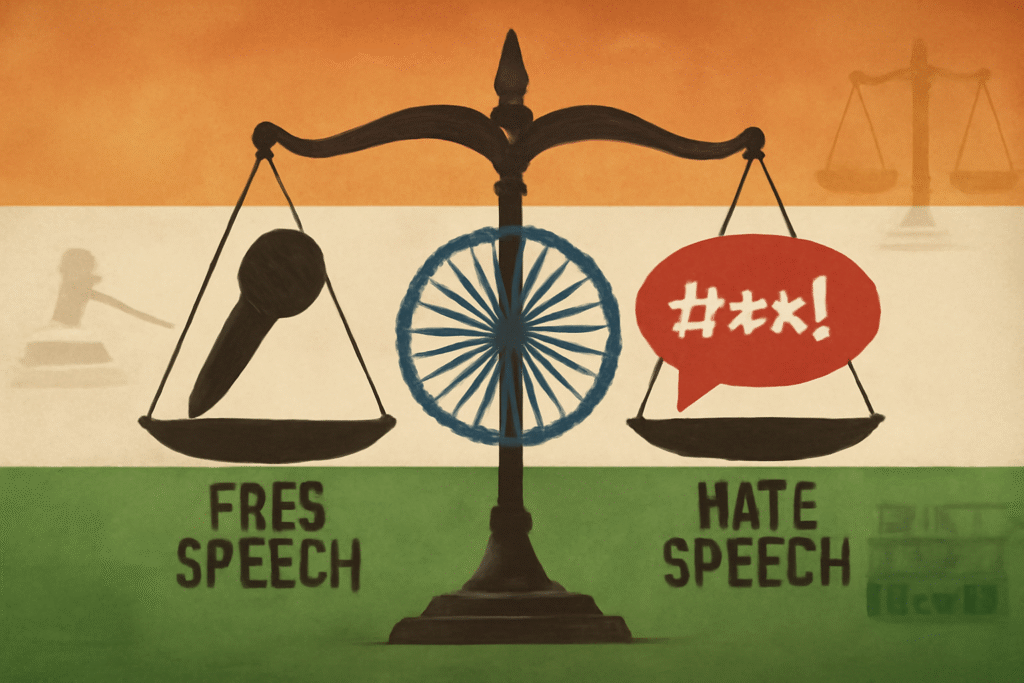Published on 18th February 2025
Authored By: Akanksha
Chanakya National Law University, Patna
Citation: 1987 AIR 1086,1987 SCR(1) 819,1987 SCC(1) 395
Date Of Judgment: December 20, 1987
Court: In the honourable Supreme Court of India
Appellant: MC Mehta
Defendant: Union Of India
Bench: C.J.I. P.N. Bhagwat, Justice G.L. Oza, and Justice D.P. Madon
Introduction
M.C. Mehta, open referred to as the “green Avenger of India ,” is a Renowned public interest lawyer and environmental activist. Known as the “green lawyer of India,” he has independently secured numerous landmark judgement through public interest litigations (PIL) addressing environmental issues.
One of his most notable cases in MC Mehta versus Union of India (1986), Where he represented himself as the petitioner. In this case this case the leak of oleum gas which was after the infamous gas leak The Bhopal Gas tragedy has taken place . This case is a cornerstone of environmental activities in India and hold immense for various reasons.
Following the devastating Bhopal gas tragedy in 1984, the judgement in this case refined the interpretation and application of environmental laws in India. It also expanded the scope of “article 21, which guarantees the right to life and personally party and states that no person salary deprived of his life or personal liberty accept according to procedure established by law”[1] and “Article 32, which provide remedies for the violation of fundamental rights under the Indian constitution.”
This case is a landmark judgement in India is environmental law history. filed by environmental activist M.C. Mehta it built with issues related to industrial safety, pollution, and public health after a serious gas leak from a chemical plant in Delhi in December 1985 incident occurred just a year after the devastating Bhopal Gas Tragedy, about industries handling hazardous substances.
Background
Shri Ram a subsidiary of Delhi cloth Mills limited operated multiple industrial units with in a single complex trade over approximately 76 acres in a density populated area.The facility produced various chemical such as caustic soda, chlorine , hydrochloric acid , sulphuric acid , alum , anhydrous sodium sulphate , high- test hypochlorite, and active soil.
It also regularly used products like bleaching powder, superphosphate, vanaspati , and soap. The caustic chlorine plant, commissioned in 1949, employee 263 workers. After the 1984 Bhopal gas disaster, the central government appointed a firm named technica to inspect Shriram caustic chlorine plant.
The firm submitted a preliminary report highlighting potential risks and recommendations for improvements.In March 1985, the hazards of a major leak. from the caustic chlorine plant were discussed in parliament. As a response, The Manmohan Singh committee was formed to further access the plant. Following a detailed inspection , the committee provided a report with recommendations for safety and pollution control measures.
M.C.Mehta, acting as the petitioner filed a Civil Writ Petition under article 32 of the Indian constitution. He shout the closure of Shri rams’ industrial units are given that they were located in a heavily populated area of Delhi and posed significant risks to nearby residents. While this petition was pending , there was an incident of oleum gas leakage from one of Shri Ram’s units.
Following this claims for compensation word filed by the Delhi legal Aid and Advise board and the Delhi Bar association.
In response, Shri Ram filed another civil writ petition ( 26 of 1986 ) challenging various directives ordering the cessation of its production . The supreme court through these two petitions, established several new legal principals.
The final verdict, which date with critical environmental issues was delivered by a five judge constitution bench under article 145(3) of the constitution. This judgement set significant legal precedents regarding environmental safety, industrial regulation, and public health.
Facts
On December 4 ,1985 a major oleum gas leak occurred at one of the Shriram’s units affecting many people including workers and nearby residents. Tragically an advocate from the Tis Hazari court died after inhaling the gas. Incident was confirmed by both the petitioner and the Delhi Bar association. Two days later on December 6, another minor gas leak happened due to a pipe joint failure.
In response to these incidents, Delhi administration issued and order under section 133( 1) of the code of criminal procedure ,1973, directing Shri Ram to:
- stop using harmful chemicals and gases in the unit between two days.
- Remove all hazardous chemicals to a safer location within seven days and ensure that they are not stored at the same site again.
- appear before the district Magistrate’s court in Delhi on December 17,1985, to explain why the order could not be followed if necessary.
The supreme court took up both petitions the following day and reviewed the district magistrates order however the court noted that due to uncertain inadequacies immediate and effective action could not be taken.
Key issues raised
- Should industries handling hazardous substances be held strictly responsible for accidents?
- Does the right to life include the right to a clean and safe environment?
- Can courts create rules to protect the environment and public safety?
- Should Hazardous industries be removed away from populated areas?
- What safety measures should industries adopt to prevent future accidents?
Arguments from the appellant side
The appellant argued that Shriram’s chemical plant was in a crowded area, which made it dangerous for the people living nearby. He said the gas leak violated people’s fundamental right to life, which includes the right to live in a safe and healthy environment ( Article 21 of the constitution ).
He explained that industries working with dangerous chemicals have a responsibility to ensure the activities don’t harm the environment or public health. He said protecting the environment is directly linked to people’s basic rights.
The appellant argued that industries dealing with dangerous materials must take full responsibility for any harm caused ,no matter what the reason.He pushed for a legal rule that would hold such companies accountable even if the accident wasn’t intentional.
He said hazardous industries like Shriram should not be allowed to operate in crowded areas where accidents can harm many people. He is suggested moving such industries to less populated areas to reduce risks.
He demanded that Shri Ram be held accountable for the harm called by the gas leak and at the victims, including the family of including the advocate who died, should be compensated. He also stress the need force stronger enforcement of safety laws to prevent negligence.
Arguments from respondents side
The respondents argued that sriram’s industrial units played a significant role in contributing to economic development by producing essential chemicals and providing employment to many workers. They emphasize that shutting down such industries could adversely affect economic growth and lead to job losses.
Shriram claim that it’s operations followed the safety standards and regulations applicable at the time. They are you that the oleum gas leak was an unfortunate accident and not the result of negligence.
The respondents contended that the plants location in Delhi was based on operational and logistical needs moving the plant to a different location would not only disrupt production but also involve significant financial and logistical challenges.
Shri Ram highlighted the immediate steps taken after the oleum gas leak, including efforts to minimise harm improve safety measures and comply with the recommendation of the Manmohan Singh committee and other regulatory authorities.
The respondents are you that the gas leak was not intentional and should not result in absolute liability the maintain that accidents in industries handling hazardous substances could occur despite all precautions.
The respondents sound quotes permission to continue operations while they upgraded safety measures and compiled with the prescribed standards.
Judgement of the case
The supreme court judgement in this case in 1986 set important legal principals to hold industries accountable for public safety and environmental protection . The court rule that industries handling dangerous material are fully responsible for any harm cause even if the incident wasn’t intentional this is called the absolute liability principle which is stricter than earlier laws.
It declared that the right to life under article 21 includes the right to live in a clean and safe environment and industrial activities must not endanger this right. The court suggested that industries dealing with harmful substances should not be located in crowded areas and should be move to safer locations to protect public health.
It directed industries and the government to enforce strict safety rules conduct regular inspections and prevent accidents. Victims of Industrial accidents must be compensated fairly and promptly by the industries responsible for the harm. The court emphasize its responsibility to protect people’s rights than Authorities fail to act, allowing cases like this to be heard as public interest litigations(PILs).
Rationale behind this case
The court said everyone has the right to leave in a safe and healthy and environment which is part of the right to life on the article 21 of the constitution. The gas leak showed that public safety was at which can increase must not harm people.
Industries working with dangerous materials must take complete responsibility for any harm called no matter the reason. This strict rule ensures they are careful in their operations. It’s better to stop accidents from happening them deal with the damage afterward the court insisted on sector safety measures and regular checks to prevent disasters.
Impact of the case
The judgement became a foundation for environmental jurisprudence in India. It ensured industries take responsibility for their actions , strengthened the enforcement of environmental laws, and prioritized public safety over industrial growth. It laid a foundation for a stronger more responsible approach to industrialisation by balancing economic growth with the protection of public health and the environment.
References
- (Article 21 in constitution of India) https://indiankanoon.org/doc/1199182/ accessed 27 December 2024
- (Article 32 in constitution of India) https://indiankanoon.org/doc/981147/ accessed 27 December 2024
- (M.C. Mehta vs Union of India & Ors on 12 January, 1988) https://indiankanoon.org/doc/59060/ accessed 27 December 2024
- Garg R, ‘MC Mehta vs. Union of India (1986) : Case Analysis’ (iPleaders, 3 October 2022) https://blog.ipleaders.in/mc-mehta-vs-union-of-india-1986-case-analysis/ accessed 27 December 2024
- Pandit M, ‘Case Comment: MC Mehta vs Union of India, 1987’ (Academike, 14 August 2024) https://www.lawctopus.com/academike/case-comment-mc-mehta-vs-union-of-india-1987/amp/ accessed 27 December 2024




